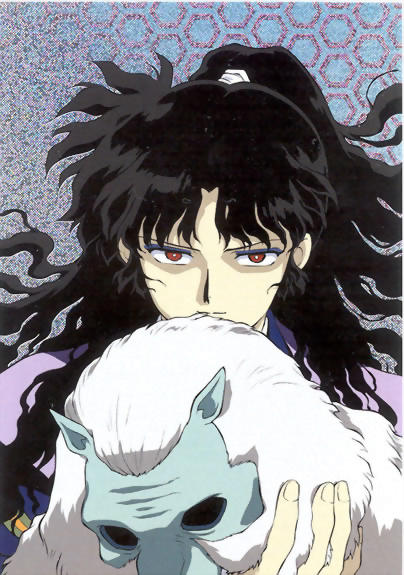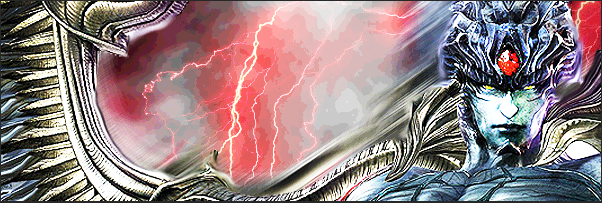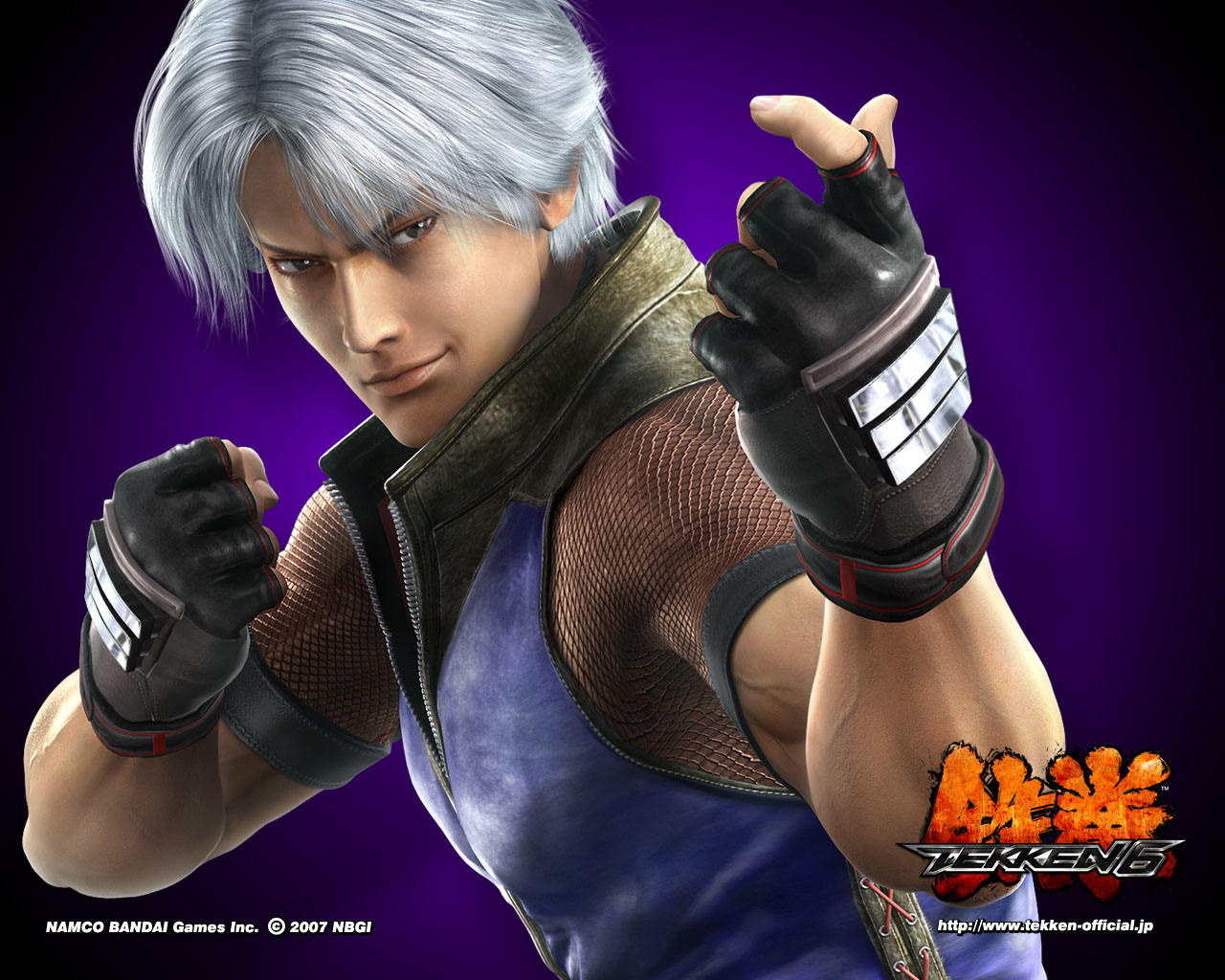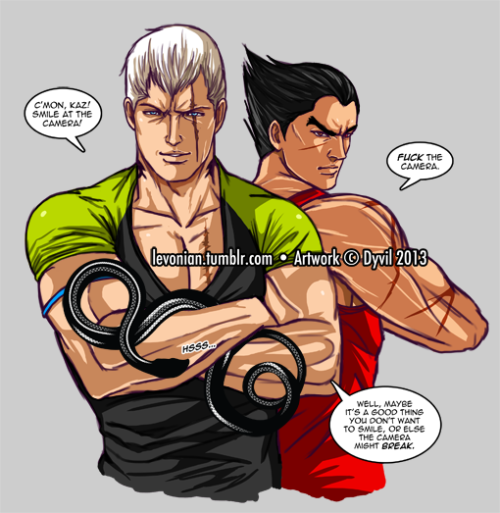Post by Moose on Aug 13, 2013 16:46:13 GMT
NOTATION:
1- LP ( Square or X )
2- RP ( Triangle or Y )
3- LK ( X or A )
4- RK ( Circle or B )
5- Tag Button ( R1 / RB )
u- up (U means to hold the input)
d- down (D means to hold the input)
f- forward (F means to hold input)
b- back (B means to hold input)
u/f_u/b_d/f_d/b- indicate diagonals
~- slide input
:~ Just Frame input
_: seperates seperate alternative inputs
Special Lingo:
CH- Counter Hit (Attack connected durng the animation of an opponent's attack)
NH- Normal Hit
SS- Sidestep. L and R signify the direction.
BDC- Backdash cancel
WD/CD- Wavedash / Crouch dash
B!- Bound
W!- Wallsplat
KD- Knockdown
NC- Natural combo. This means that the whole string is guaranteed as long as the first hit connects.
NCc- Natural Counter Combo. This means that the whole string will hit if the first hit is a counter hit.
WS- While Standing
WR- While running
FC- Full crouch
iWS/iWR- Instant while running/standing
JF- Just frame
Some characters will have character specific notations. These will usually be stances or commonly used moves. For the sake of space, i'm not going to list them. Go to www.tekkenzaibatsu.com for more specific things.
MOVEMENT:
Movement is probably the most important skill of any Tekken player. Moving around the stage and controlling the distance to our opponent can create advantageous situations for your character. Granted, every character has a different optimal range. Steve wants to be in your face, Wang wants just out of jab range, and Bryan wants range 2 or 3. It's a matter of creating whiffs, while still being in range to punish those whiffs.
Backdash Cancelling (BDC):
This is a very common method of backward movement, and should be your first step into learning good movement.
Backdashes are performed by hitting b,b. However, you are vulnerable during the recovery frames of the dash. To lessen this, you can cancel the backdash into a sidestep or crouch. Then, you cancel back into another backdash. So, it would look look like this:
b, b, d/b~b, b, d/b~b
It looks weird, but the faster you cancel back into a backdash, the less frames you are crouching. Also, if you hold b during each backdash, you can effectively move away while still blocking.
Sidestep Cancelling:
This is used for positioning, but it's nice to know. The notation would be something like this:
f~u, f~u, f~u
You essentially sidestep, then at the end of the sidestep you hit forward to cancel it and then quickly hit up to sidestep again.
Wavedashing:
DORYA! This is generally the purpose of wavedashing. You use it to apply pressure both with wavedash mixups, and the deadly EWGF if you're playing a Mishima. (Not all characters can wavedash)
The notation would be f, n, d, df, f, n, d, df, f.... or f, qcf, f, qcf.... and so on.
There are some character specific movements tricks, so be sure to check out your characters command list and play around.
BASIC ATTACKING:
The following is about generic universal strategies for attacking. (Some characters do not have these exact moves. Experiment with your character.)
- 1. Your basic 10 frame jab. This and your FC 1 will be your universal momentum stoppers. Just like in real fighting, jabs aren't for doing damage. Their purpose is to get in on your opponent. These little pokes can freeze them up, or just get them off of you. However, jabs can be sidestepped and ducked.
- df+1. 90% of characters will have a quick df+1 that hits mid. This is going to be your main generic mid. Use these to keep opponents from ducking. This not only makes lows more viable, it also makes throwing out highs a bit safer.
-4. Magic 4. Magic 4's are used as quick keep away options. These are commonly used in spacing danceoffs and some character's Magic 4s can give full juggle on CH. Be warned though, whiffing anything in Tekken will cost you 50% health most of the time.
-d+4_d/b+4-_d+3_d/b+3- One of these will generally give you a quick low. You should throw these out just enough to make your opponent scared. Throw them out too much, and you'll get blocked and punished. Throw out too few, and you'll never break the turtle.
-u/f+4_u/f+3. Hopkicks are a big part of offense. They crush lows and often give full juggle, while being somewhat safe on block. Using well timed hopkicks will win you more games than it should. Be friends with hopkicks.
JUGGLING:
Juggle pragmatics is a pretty trial-and-error based thing. Don't rely on max damage juggles you see on youtube. Finding what does and doesn't connect at different distances is something that will happen over time.
Juggles are comprised of 4 basic parts:
1. Launcher: These either launch them into the air or put them into some kind of stun.
2. Filler: These are floaty attacks used to add damage onto basic juggles.
3. Bound: This is the act of bouncing your foe against the ground allowing for further damage. Every character's bound moves are different.
4. Bound ender: These are usually quick, damaging attacks. Take advantage of the bound state to deal good damage.
Three Basic juggles:
These are the three basic types of juggles you want for each launcher:
Wall Carry- This is simply the combo that moves them furthest and/or gets the best wall splat for wall combos
Damage- This is just doing whatever squeezes out the most damage.
Okizeme- These combos are usually ended with a spike. This sacrifices some juggle damage for better wake-up follow-ups.
WALL GAME:
Ever since Tekken 5, walls have been helping deliver nasty damage, and it's no different now.
General Wall Rules:
- The opponent will begin to slump quickly after 3 hits after a wallsplat.
- Single hit bound moves do not count toward this total, but any hits that don't cause bound in a bound string do.
- Depending on the speed of the string, and size of the opposing character, more hits are possible.
- Tag assaults at the wall can be very damaging, as there is little recovery between the TA and your point characters ender, allowing for lengthy wall combos. Be wary of scaling, though.
Avoiding The Wall:
Having your back to the wall is NEVER a good idea. Here are some ways to stay away from danger.
- Sidestep cancel to quickly get around to the side. This can be dangerous against homing moves, however. If you sidestep every time, you'll eat homing moves.... every time.
- Use throws. Some throws cause a side switch on hit or on break. Use these to force your opponent to either switch sides, or eat a throw.
- NEVER BACK ROLL. Backrolling at the wall just turns you into a spinning mass of vulnerability frames. Don't do it. You won't go anywhere.
DEFENSE:
First line of defense....
Blocking:
Simply hold back to block mids and highs, or hold down-back to block lows and duck highs. Very basic, but very important.
Low Parrying:
This just involves hitting down-forward when an opponents low connects. Use this to turn the tables on a prdictable string or slow low.
Throw Breaking:
This will take practice. Breaking throws is done by watching the animation...
- If the left arm is extended out, the throw is broken by pressing 1.
- If the right armis extended out, the throw is broken by pressing 2.
-If both arms are entended, break the throw with 1+2.
Generic throws come out at 12 frames, and you have roughly 12 frames after the throw connects to break it. So, you have 24 frames ( a little shy of half a second) to recognize the throw and break it. A little tricky, but reasonable with practice.
TAG MECHANICS:
Tag: This is a basic raw tag. Performed by pressing 5. However, you are at slight disadvantage, so tag only at a safe time. If you tag at the wall, your partner will come from the sky in a rather unsafe manner. You can get floated into a wall combo.
Tag Crash: This is done by pressing 2+5 while grounded, while your partner is in Rage/Netsu.
Tag Assault: This is done by pressing 5 during a bound move. It allows your partner to come in and aid you in your juggle for one move or string. However, stance transitions allow for additional hits. Be warned, when you Tag Assault, your opponent's partner gets Netsu and your partner loses all red health.
Tag Buffered Launchers: After certain launchers, you can press 5 to tag your partner in to finish the combo.
Choosing A Character:
Not all characters listed. Just examples.
Easy:
Miguel (Good basic stance)
Bob (Good fundamentals)
Slim Bob
Feng (Low Risk)
Paul (Good damage, no execution)
Law ( Both of them )
Lili (good damage)
Jack (Good basics)
P. Jack
Sebastian
Medium:
Dragunov (High risk, bad tracking)
Jinpachi ( Risk/Reward)
Jin (Basics, some execution)
Zafina (Stance happy)
Kunimitsu
Wang (Very movement based)
Ling (Very diverse moveset)
Miharu
Steve (Diverse moveset, some execution for DCK cancels)
Hard:
Kazuya ( EWGFs everywhere)
Heihachi ( EWGFs everywhere)
Devil Jin (EWGFs everywhere)
Bryan (Taunt
Nina (iWS 1 juggles)
Lei ( 12 stances)
Yoshimitsu (Sooo many moves, garbage damage)
1- LP ( Square or X )
2- RP ( Triangle or Y )
3- LK ( X or A )
4- RK ( Circle or B )
5- Tag Button ( R1 / RB )
u- up (U means to hold the input)
d- down (D means to hold the input)
f- forward (F means to hold input)
b- back (B means to hold input)
u/f_u/b_d/f_d/b- indicate diagonals
~- slide input
:~ Just Frame input
_: seperates seperate alternative inputs
Special Lingo:
CH- Counter Hit (Attack connected durng the animation of an opponent's attack)
NH- Normal Hit
SS- Sidestep. L and R signify the direction.
BDC- Backdash cancel
WD/CD- Wavedash / Crouch dash
B!- Bound
W!- Wallsplat
KD- Knockdown
NC- Natural combo. This means that the whole string is guaranteed as long as the first hit connects.
NCc- Natural Counter Combo. This means that the whole string will hit if the first hit is a counter hit.
WS- While Standing
WR- While running
FC- Full crouch
iWS/iWR- Instant while running/standing
JF- Just frame
Some characters will have character specific notations. These will usually be stances or commonly used moves. For the sake of space, i'm not going to list them. Go to www.tekkenzaibatsu.com for more specific things.
MOVEMENT:
Movement is probably the most important skill of any Tekken player. Moving around the stage and controlling the distance to our opponent can create advantageous situations for your character. Granted, every character has a different optimal range. Steve wants to be in your face, Wang wants just out of jab range, and Bryan wants range 2 or 3. It's a matter of creating whiffs, while still being in range to punish those whiffs.
Backdash Cancelling (BDC):
This is a very common method of backward movement, and should be your first step into learning good movement.
Backdashes are performed by hitting b,b. However, you are vulnerable during the recovery frames of the dash. To lessen this, you can cancel the backdash into a sidestep or crouch. Then, you cancel back into another backdash. So, it would look look like this:
b, b, d/b~b, b, d/b~b
It looks weird, but the faster you cancel back into a backdash, the less frames you are crouching. Also, if you hold b during each backdash, you can effectively move away while still blocking.
Sidestep Cancelling:
This is used for positioning, but it's nice to know. The notation would be something like this:
f~u, f~u, f~u
You essentially sidestep, then at the end of the sidestep you hit forward to cancel it and then quickly hit up to sidestep again.
Wavedashing:
DORYA! This is generally the purpose of wavedashing. You use it to apply pressure both with wavedash mixups, and the deadly EWGF if you're playing a Mishima. (Not all characters can wavedash)
The notation would be f, n, d, df, f, n, d, df, f.... or f, qcf, f, qcf.... and so on.
There are some character specific movements tricks, so be sure to check out your characters command list and play around.
BASIC ATTACKING:
The following is about generic universal strategies for attacking. (Some characters do not have these exact moves. Experiment with your character.)
- 1. Your basic 10 frame jab. This and your FC 1 will be your universal momentum stoppers. Just like in real fighting, jabs aren't for doing damage. Their purpose is to get in on your opponent. These little pokes can freeze them up, or just get them off of you. However, jabs can be sidestepped and ducked.
- df+1. 90% of characters will have a quick df+1 that hits mid. This is going to be your main generic mid. Use these to keep opponents from ducking. This not only makes lows more viable, it also makes throwing out highs a bit safer.
-4. Magic 4. Magic 4's are used as quick keep away options. These are commonly used in spacing danceoffs and some character's Magic 4s can give full juggle on CH. Be warned though, whiffing anything in Tekken will cost you 50% health most of the time.
-d+4_d/b+4-_d+3_d/b+3- One of these will generally give you a quick low. You should throw these out just enough to make your opponent scared. Throw them out too much, and you'll get blocked and punished. Throw out too few, and you'll never break the turtle.
-u/f+4_u/f+3. Hopkicks are a big part of offense. They crush lows and often give full juggle, while being somewhat safe on block. Using well timed hopkicks will win you more games than it should. Be friends with hopkicks.
JUGGLING:
Juggle pragmatics is a pretty trial-and-error based thing. Don't rely on max damage juggles you see on youtube. Finding what does and doesn't connect at different distances is something that will happen over time.
Juggles are comprised of 4 basic parts:
1. Launcher: These either launch them into the air or put them into some kind of stun.
2. Filler: These are floaty attacks used to add damage onto basic juggles.
3. Bound: This is the act of bouncing your foe against the ground allowing for further damage. Every character's bound moves are different.
4. Bound ender: These are usually quick, damaging attacks. Take advantage of the bound state to deal good damage.
Three Basic juggles:
These are the three basic types of juggles you want for each launcher:
Wall Carry- This is simply the combo that moves them furthest and/or gets the best wall splat for wall combos
Damage- This is just doing whatever squeezes out the most damage.
Okizeme- These combos are usually ended with a spike. This sacrifices some juggle damage for better wake-up follow-ups.
WALL GAME:
Ever since Tekken 5, walls have been helping deliver nasty damage, and it's no different now.
General Wall Rules:
- The opponent will begin to slump quickly after 3 hits after a wallsplat.
- Single hit bound moves do not count toward this total, but any hits that don't cause bound in a bound string do.
- Depending on the speed of the string, and size of the opposing character, more hits are possible.
- Tag assaults at the wall can be very damaging, as there is little recovery between the TA and your point characters ender, allowing for lengthy wall combos. Be wary of scaling, though.
Avoiding The Wall:
Having your back to the wall is NEVER a good idea. Here are some ways to stay away from danger.
- Sidestep cancel to quickly get around to the side. This can be dangerous against homing moves, however. If you sidestep every time, you'll eat homing moves.... every time.
- Use throws. Some throws cause a side switch on hit or on break. Use these to force your opponent to either switch sides, or eat a throw.
- NEVER BACK ROLL. Backrolling at the wall just turns you into a spinning mass of vulnerability frames. Don't do it. You won't go anywhere.
DEFENSE:
First line of defense....
Blocking:
Simply hold back to block mids and highs, or hold down-back to block lows and duck highs. Very basic, but very important.
Low Parrying:
This just involves hitting down-forward when an opponents low connects. Use this to turn the tables on a prdictable string or slow low.
Throw Breaking:
This will take practice. Breaking throws is done by watching the animation...
- If the left arm is extended out, the throw is broken by pressing 1.
- If the right armis extended out, the throw is broken by pressing 2.
-If both arms are entended, break the throw with 1+2.
Generic throws come out at 12 frames, and you have roughly 12 frames after the throw connects to break it. So, you have 24 frames ( a little shy of half a second) to recognize the throw and break it. A little tricky, but reasonable with practice.
TAG MECHANICS:
Tag: This is a basic raw tag. Performed by pressing 5. However, you are at slight disadvantage, so tag only at a safe time. If you tag at the wall, your partner will come from the sky in a rather unsafe manner. You can get floated into a wall combo.
Tag Crash: This is done by pressing 2+5 while grounded, while your partner is in Rage/Netsu.
Tag Assault: This is done by pressing 5 during a bound move. It allows your partner to come in and aid you in your juggle for one move or string. However, stance transitions allow for additional hits. Be warned, when you Tag Assault, your opponent's partner gets Netsu and your partner loses all red health.
Tag Buffered Launchers: After certain launchers, you can press 5 to tag your partner in to finish the combo.
Choosing A Character:
Not all characters listed. Just examples.
Easy:
Miguel (Good basic stance)
Bob (Good fundamentals)
Slim Bob
Feng (Low Risk)
Paul (Good damage, no execution)
Law ( Both of them )
Lili (good damage)
Jack (Good basics)
P. Jack
Sebastian
Medium:
Dragunov (High risk, bad tracking)
Jinpachi ( Risk/Reward)
Jin (Basics, some execution)
Zafina (Stance happy)
Kunimitsu
Wang (Very movement based)
Ling (Very diverse moveset)
Miharu
Steve (Diverse moveset, some execution for DCK cancels)
Hard:
Kazuya ( EWGFs everywhere)
Heihachi ( EWGFs everywhere)
Devil Jin (EWGFs everywhere)
Bryan (Taunt
Nina (iWS 1 juggles)
Lei ( 12 stances)
Yoshimitsu (Sooo many moves, garbage damage)








 were the fuck is everyone tekken is a part of me
were the fuck is everyone tekken is a part of me 

